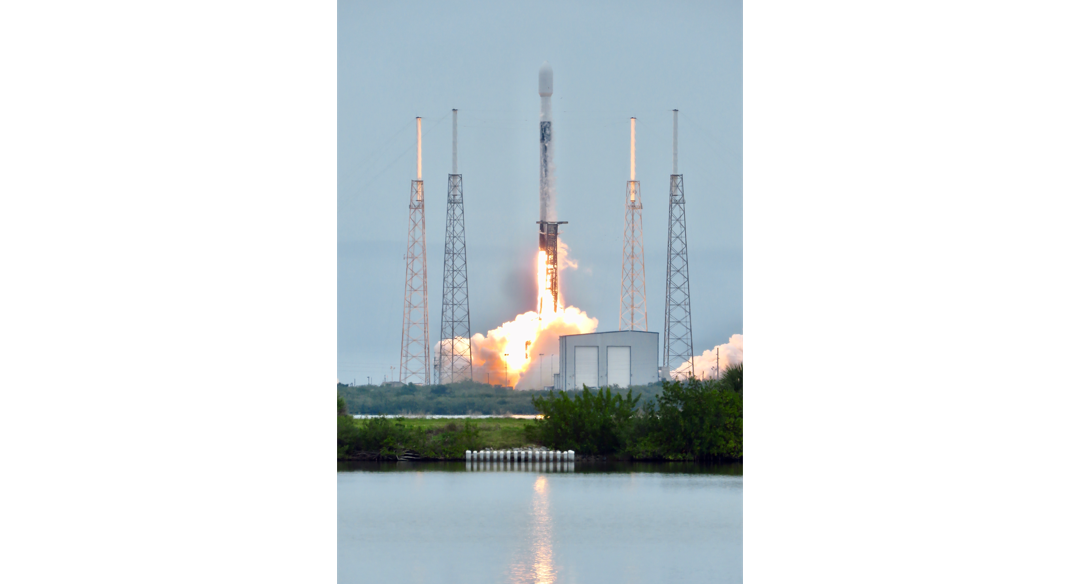
CAPE CANAVERAL—Just ahead of a high-profile, privately funded crewed mission for Axiom Space, SpaceX on April 1 launched its fourth rideshare mission, delivering 40 spacecraft into orbit, including a 1-ton hyperspectral imaging satellite for Germany’s space agency, DLR.
The SpaceX Falcon 9 rocket fired up its nine liquid oxygen- and kerosene-fueled Merlin 1D engines and lifted off from Cape Canaveral Space Force Station’s Space Launch Complex 40 at 12:24 p.m. EDT.
The rocket soared southeast along the Florida coast, heading toward a polar orbit. The first stage, which was flying for the seventh time, landed on a drone ship stationed downrange, while the rocket’s second stage, powered by a single Merlin Vacuum engine, continued on to reach an altitude of more than 400 mi. above Earth.
Forty satellites, including Germany’s EnMAP environmental imaging satellite, shared the ride to orbit. The mission, designated Transporter-4, was SpaceX’s fourth dedicated small-satellite rideshare for commercial companies, agencies and research organizations. Separately, SpaceX also regularly delivers batches of its own Starlink broadband satellites into low Earth orbit.
SpaceX rideshare prices begin at $1.1 million to deliver a 485-lb. payload into a Sun-synchronous orbit. The company plans to fly four Transporter rideshare missions per year.
The April 1 Transporter-4 mission was SpaceX’s 12th launch in as many weeks, a pace the company intends to increase. CEO and chief engineer Elon Musk said March 28 that SpaceX is aiming for 60 launches this year.
Next up is the Axiom-1 (Ax-1) mission, which will be SpaceX’s sixth crewed flight and second private charter. Unlike during the Jared Isaacman-funded Inspiration 4 mission, SpaceX this time will deliver a four-member crew to the International Space Station for an eight-day visit. Launch of Ax-1 is targeted for 12:05 p.m. EDT on April 6 from Kennedy Space Center.
